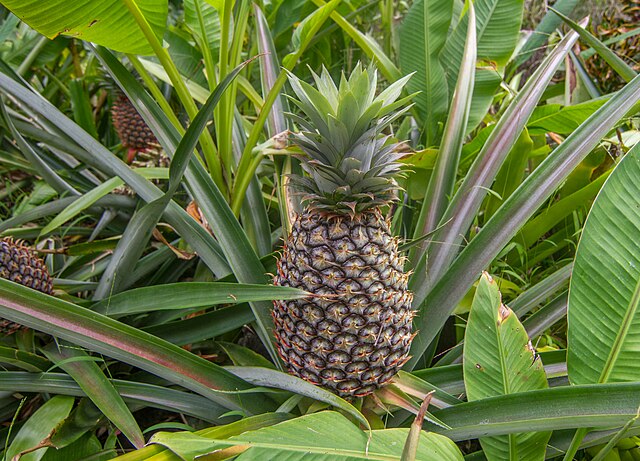Eager to recover 1980s’ glory, pineapple exporters in Fiji are staging a comeback to the New Zealand market via a gaining cultivar.
On November 19, 2025, the country shipped a 3-tonne trial cargo of popular Ripley Queen pineapple to Auckland.
Coordinating the breakthrough was the Minister of Agriculture and Waterways Tomasi Tunabuna who praised the variety a hit with Kiwi consumers.
Tunabuna briefed Fiji Village news that this initial dispatch of a 3-month trial will pave way for large-scale exports.
In 2023, Fiji dispatched 13.2 tonnes of the tropical fruit to New Zealand but sales lapsed in 2024.
2023’s NZ-bound shipments were the highest in a decade but still far apart from the 120 tonnes per year of the early 1980s.
With the onset of Ripley Queen from the country’s Western Division, however, there is a glimmer of recouping 2023 glory.
Double the International Price
Due to its sweetness, vibrant aroma and long-term freshness, the variety is proving popular internationally – but at a steep cost.
Indeed, Fiji’s pineapples have traditionally cost double the price of other import origins inside New Zealand.
For this reason, even in the best trade years such as 2023, they have been representing only 0.1% of NZ’s pineapple imports.
In the latest trial export, farmers received $7 Fijian dollars ($3.2) a kg for Ripley Queen – an uplifting rate.
According to the minister Tunabuna, other cost-related challenges that could key in past the trial period include high landing fees.
Luckily, Fiji has alternative markets such as Tuvalu, Canada and Nauru, the last two averaging 1 tonne+ in imports (2023).
Domestically, pineapple prices in Fiji appreciated by 30% in the 2021-24 period, to $3.5-6 Fijian dollars ($1.51-2.58) apiece. Production shifts and market conditions such as the ones in the next section contribute to this appreciation.
Fiji Pineapple Statistics
Fiji is a South Pacific island group nation comprising 840 scattered islands, 100 of which inhabited. Pineapple remains a major export produce that reaches peak harvest in the November-January timeline each year. According to the Pacific Trade Invest, there were 200 mostly smallholder pineapple growers in the country in 2023. Most cultivated the crop in the Northern Division’s Seaqaqa while others in the Western Division’s Nadia, Ba, Ra, and Nadroga.
Production was lowest on record in 1964 at 500 tonnes and the highest in 2015 at 8,400 tonnes, per the Helgi Library. As of 2022, Fiji was the 53rd biggest pineapple-producing nation.
In the 2019-23 period, pineapple production and acreage grew steadily. In 2021, however, output fell by over 1,027 tonnes annually while acreage by 63 hectares (ha), to 6,350 tonnes and 907 ha, respectively. The below FAOSTAT s data interpretation offers salient details:
| Year | Production [tonnes] | Acreage [Ha] |
| 2023 | 8,591 | 1,227 |
| 2022 | 7,393 | 1,013 |
| 2021 | 6,350 | 907 |
| 2020 | 7,423 | 1,060 |
| 2019 | 7,158 | 705 |
In fresh pineapple export terms, Fiji manages a modest worldwide contribution. It topped 19.74 tonnes worth US$29,160 in 2023, per the World Bank. The top markets that year included New Zealand with 13.23 tonnes (t), Tuvalu with 4.27 t, Canada with 1.15 t and Nauru with 1t. New Zealand notably used to lionize the Fiji origin in the early 1980s with exports reaching 120 tonnes annually. But due to their high prices vis-á-vis other sources, Fiji’s pineapples gradually lost footing in Auckland.
Some companies in Fiji also contribute to the value chain by producing and exporting juice products from various fruits. One of these is Juice Fiji, which makes up to 10,000 bottles of juice per week. It exports some of these to Australia and New Zealand.
